
In 1970, the Scholar’s editors polled the literary lights of the day for their opinion on that book published in the past quarter of a century that they believed to have been the most undeservedly neglected. W. H. Auden recommended poetry from a WWII private, Babette Deutsch sang the praises of Isabel Bolton, Samuel Beckett was self-effacing, and Anthony Burgess proved his eccentricity once again. Last week, we reprinted their responses and several more.
Here are the remaining responses from 1970, with notes on whether and to what degree these forgotten books have since been remembered.
Nat Hentoff:
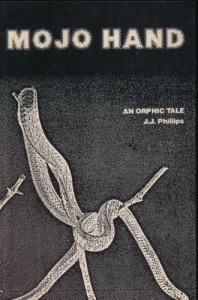
The most neglected book I know of is a novel, Mojo Hand, written by Jane Phillips and published by Trident in 1966.
It’s about a search for roots—in this case, black roots. But it goes beyond and deeper, becoming that quality of personal discovery which is simultaneously universal.
Reprinted in 1985 but currently available only in used bookstores, Mojo Hand remains unknown beyond university courses on the blues tradition in American literature.
William Jovanovich:
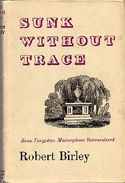
Only a publisher can know what exquisite torture it is to be asked to choose a “neglected” book. I have only to turn to my own backlist and to lay my heart bare, as Poe said—Poe said that about the heart not the backlist—for you to know about a score of neglected books.
Most publishers—well, some publishers—suffer too much from the public’s rebuff. Each year I publish books that deserve better than to sink without a trace—an Eton headmaster, Robert Birley, once wrote a book about such books called Sunk Without a Trace (Harcourt, Brace & World, 1962) and I published it, an almost unknown book, too.
Maybe books are not really neglected, after all. They are just appreciated selectively, as it were. After all, for every book there is at least one believing reader, its publisher.
Stanley Kauffmann:
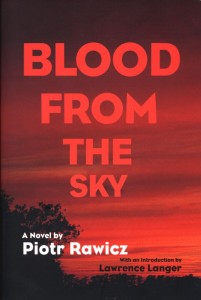
Your invitation does not specify a neglected American book, so I nominate a novel called Blood from the Sky by Piotr Rawicz, translated by Peter Wiles (Harcourt, Brace & World, 1964). In the New York Review of Books, February 20, 1964, I said:
Rawicz’s novel, in addition to its mute, stony grief, its oblique but overwhelming rendering of the [Nazi] terror, is also in fact (if incredibly) humorous; it is also lustful, lyric, clever, exciting. Indeed it has many of the textures of (shall we say) a fine secular novel. In short, Rawicz has not been prevented by his feelings from transmuting the source of those feelings into ruthlessly truthful art.
If a foreign book is ineligible, I nominate an American novel republished in recent years and neglected then as earlier: The Awakening by Kate Chopin, first published in 1899 (Capricorn Books, 1964). In his section on it in Patriotic Gore, Edmund Wilson quite rightly calls it “beautifully written” and an anticipation of D. H. Lawrence. It has never had anything like the attention it deserves.
Blood from the Sky was reprinted by Yale University Press in 2003 and remains in print. The Awakening has experienced a resurgence, particularly in undergraduate literature courses. With the advent of the Internet, Chopin has also gained her own International Society.
Doris Lessing:

The Sufis by Idries Shah (Doubleday, 1964): When this book appeared in Britain, it got an astonishingly large welcome for what is on the face of it a way-out subject. Robert Graves in a foreword described a feeling of recognition, “yes, this is for me,” among people who had become resigned to a solitary holding of “peculiar” views. At first it was poets and writers who tended to recognize its importance, but now its influence is spreading where long overdue—among scientists, psychiatrists, biologists and so on. But I gather reviews in the States weren’t very perceptive. For instance, the New York Times Book Review seemed to resent claims made: it does make large claims for influence on the West in places where traditional scholarship sees none. Well, I’ve had the experience of watching a dear friend, a Spanish and Portuguese scholar, flying into a rage with: “What nonsense!”—then rushing off to follow up suggestions, and returning months later with: “Good God, how is it we didn’t see it before? It is lying right out there in the open.” But it isn’t facts so much, although there are facts enough, as indications of doors in places that have been overlooked, of new ways of looking at a thing. It is a seminal book, by a Sufi teacher, whose task it is to reintroduce material in the West, at a time that Sufis know is ripe for this type and style of introduction. We get it in this way: but Sufi teachers teach as is right for a community; they have used music, dancing, gestures, jokes, ritual—anything. One difficulty for those conditioned to conventional scholarship is how the book is written. Sufism is above all a way of relearning to use the mind: the book is a demonstration of it. It doesn’t put new wine into old bottles. Like other books from the same source, it does what it describes. This is “the scatter method,” explained in the book, and people who aren’t flexible enough to read differently can’t profit from it. Other people who get put off are those in search of flamboyant mysticism, of “gurus,” of emotional kicks, of rigid disciplines and hierarchies. The Sufis don’t provide these. “Mysticism,” to the Sufi, is more of a science than a “trip.” An example is their approach to E.S.P., practical, and divorced from the esoteric and the religious. E.S.P. phenomena, as we experience them now, are the first stirrings of a human organ in development; a burgeoning capacity of the human community, which is seen as an organism, a whole. Sufism has to be modern: if of no use to a contemporary community, then it is not Sufism; under one name or another, in one form or another, it has always been in the world, changing as the world changes, the perennial philosophy. This book, then, is of most use to those who can recognize the times and places in their lives when a yeast of growth has been most active, and who want to go on from there.
The Sufis has been translated into dozens of languages since it was first published half a century ago. For the 50th anniversary of the book’s publication in autumn 2014, the Idries Shah Foundation published a new English edition and commissioned translations into Persian, Arabic, and Urdu.
Harry Levin:

It is much easier to recall books that have been overrated than to dig up mute inglorious masterpieces. But, although I cannot be categorical or superlative, I can mention one highly original novel which was—in my opinion—unduly neglected. This is A Canticle for Leibowitz by W. M. Miller, Jr. (Lippincott, 1960), a fascinating sortie of the satirical imagination, cast in the mode of science fiction with religious overtones. A decade after publication it seems even more of a fable for the age of space travel and nuclear warfare, the sort of conte philosophique that Voltaire might have written, had he addressed himself to the twentieth century.
A Canticle for Leibowitz was adapted for radio three times, once by NPR (in 1981) and twice by the BBC (1993 and 2012). Miller wrote a sequel, which was published posthumously in 1997, but it is the original that still draws heady praise, 55 years on.
Kenneth S. Lynn:
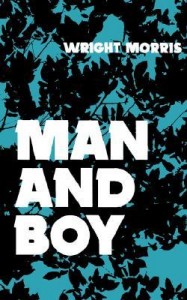
Can there be any doubt that Wright Morris is our most ignored major novelist? Not one of his works of fiction has ever received the critical attention or the popular acclaim that they all deserve. The most scandalously neglected of Morris’ books has been Man and Boy (Knopf, 1951). A masterpiece of compressed wit, it says more about American motherhood and other institutions of our contemporary civilization in two hundred pages than any other novel I know.
Martin E. Marty:

Not long after the original small printing of Wright Morris’ semi-novel, semi-documentary The Home Place was published, I tried to buy a copy. Bookstores had none. Scribner’s had none. Wright Morris saw no need to tell an overeager collegian how to find one. Rare book lists failed to turn it up. The postmistress back in my little Nebraska hometown, where many of the photos that face the text were taken, was of no help: “No one here would buy that book; why, Mr. Morris didn’t even take pictures of the pretty houses—just the old dilapidated and rusty things.” That was in 1948. For years, no one interfered with my long-term faculty loan copy of the University of Chicago Library’s edition, even though penciled inside was a notation about the extreme rarity of the book. After twenty years the University of Nebraska put out a modest paperback version, perhaps to coincide with Morris’ new God’s Country and My People, a less modest picture-and-text book that reused a few of the earlier photos. If not the most neglected book of the time, it was one of the best of the neglected ones. Having come from there (Morris and I and many other greater and lesser folk are from Nebraska; who stays?), I can testify to the authenticity of the dialogue, and the revelatory power of the pictures in this novelistic essay on humor and quiet desperation in the lives of visiting city guests and the enduring plain people of the plains, folk they had physically but never wholly spiritually left behind. I hope that one day when Wright Morris finally receives the honors and awards that are long overdue, more people will find The Home Place.
After 1970, Wright Morris began to garner wider attention, with fellowships and awards from the Guggenheim Foundation, Rockefeller Foundation, and the National Institute of Arts and Letters. His last novel, Plains Song, won the American Book Award in 1981. Morris was interviewed for the Paris Review’s Art of Fiction No. 125, in Fall 1991. Most of Morris’s books are still in print.
W. S. Merwin:
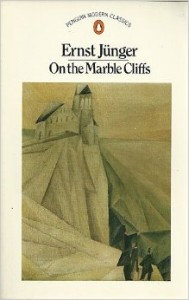
I’m not anything like well enough read to do justice to your question, and I should probably take some time to ponder it. But the first book that leaps to mind—since I think it’s a great book and virtually no one I’ve ever mentioned it to has read it—is Ernst Jünger’s On the Marble Cliffs (New Directions, 1947). I’d certainly put it high in any such list, anyway. I should say that it’s been a few years since I last read it, myself—too long for me to venture to say much about it just like that.
Though On the Marble Cliffs is difficult to obtain in English translation, it has remained in print in Germany. In 2001, NYRB Classics published another of Jünger’s works, The Glass Bees.
Anaïs Nin:

We utterly neglected Marguerite Young, Maude Hutchins, John Hawkes, Anna Kavan, Marianne Hauser, Jerzy Kosinski, the early Truman Capote, the early Kerouac, Nathanael West, Djuna Barnes, William Goyen.
In William Goyen reality, illusion and the dream are often fused as in poetry. Passages of such poetic harmonies occur in all his books. He is the poet of atmosphere, climate, mood and subtle exchanges.
All his books have a haunting, a lasting effect. The House of Breath, In a Farther Country, Ghost and Flesh (Random House, 1950, 1955 and 1952 respectively) are all of an extraordinarily even, sustained quality. He has his own distinctive tonalities and fluid grace.
A writer of exceptional style and subtlety is Marianne Hauser: Dark Dominion (Random House, 1947), Choir Invisible (Oblensky, 1958), Prince Ishmael (Stein and Day, 1963) are novels; A Lesson in Music (University of Texas Press, 1964) is a collection of short stories. When people will tire of noise, crassness and vulgarity, they will hear the truly contemporary complexities of Marianne Hauser’s superimpositions. A new generation trained to imagery by the film may appreciate her offbeat characters and skill in portraying the uncommon.
Another writer’s writer, Goyen had already received a number of awards by the time Nin sang his praises. Several of his novels and stories were adapted for the stage, and The Paris Review interviewed him in 1976 for The Art of Fiction No. 63. Thanks to Northwestern University Press, four of his books remain in print, including The House of Breath.
Hauser, who began her career as a journalist for Swiss and French papers, later worked as a literary critic for half a dozen notable American publications. The only book of hers still in print is The Talking Room, described on its jacket as an apocalyptic vision of the late 20th century, seen through the eyes of a pregnant 13 year old who may or may not be a test tube baby. Better known but out of print is Prince Ishmael, which was nominated for a Pulitzer Prize and selected by The New York Times as a best book of 1963.
Joyce Carol Oates:

I’ve been thinking very seriously about your request. Perhaps too seriously: for I hesitated to indicate that any particular book was the most neglected book of the last twenty-five years. Could you state instead, in regard to my selection (James McConkey’s Crossroads) that I consider it a somewhat neglected book, one which should reach a wider audience than it has? Not, I believe, that it has been totally neglected, because it hasn’t; and, also, that might be quite insulting to Mr. McConkey. I think more attention should be paid to the book not only for its contents, which are fascinating, but for its adventuresome form—an ‘autobiographical novel.’ (It was published in 1968 by Dutton).
McConkey, who has contributed several major essays to the Scholar, is still celebrated for his essays and stories, which draw from his own life, and the book To a Distant Island (2000), which recreates Chekhov’s 6,500-mile journey across Russia to the penal colony on the island of Sakhalin. Crossroads has since been collected—along with three other books—into an anthology, The Complete Court of Memory (2014).
Mary Renault:
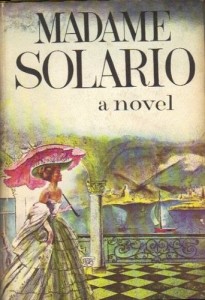
I certainly have a candidate for your list. Madame Solario was published, anonymously, by Viking in 1956. It was received with the highest critical acclaim; but the author, who was old when she wrote it, died shortly after without either revealing her identity or following it up. It has now fallen into complete neglect, and although Heinemann has lately reissued it in England, I have seen no recent comments on what is, to my mind, one of the finest novels of our century.
The setting is an Italian lake resort, the date about 1905; the vivid descriptions clearly come from memory, not research. The plot concerns the meeting of a brother and sister who have been separated for years by a family scandal, and whose effect on those involved with them is compared to the faults in the earth’s crust that engender earthquakes.
The firmness, delicacy and restraint of the handling, the perceptiveness with which the quite large cast of characters is drawn, the way in which mounting tension is achieved without the least concession to melodrama, can stand comparison with Henry James and are achieved with more economy. It is high time this vanished comet reappeared in the literary sky.
After many inquiries in the publishing world, I learned the author was called Constance Huntington, that she wrote one or two novels in her youth which had no success, and after a long silence produced this last masterpiece. Perhaps she withheld her name from lack of confidence, perhaps because the theme was a daring one for a woman of her generation. Whether she was engaged on another book at the time of her death, I do not know.
LIFE magazine revealed in 1957 that Madame Solario’s author was in fact Gladys Parrish Huntington, a British woman who had spent childhood summers in Italy on Lake Como. In 2012, a French movie was made of the novel, which was subsequently reissued in French and Italian translations. It is out of print in English.
Harlow Shapley:
I am deliberately illiterate; I have not read one tenth of the published books. How can I neglect practically all books? There probably are good ones that get you nowhere. I have a feeling that you would be willing to neglect all, if you had set out to neglect all.
One answer is “neglect everything” and what I did many weeks last summer—enjoy myself in the hospital for many days. In fact, I don’t see how you can do a good job of neglecting all, unless you simply read up on The Good Book.
That is one that gets neglected.
C. P. Snow:

Neglected books. I should like to select one or two which go back further than the last quarter of a century. In fact, to the twenties. These are Futility and The Polyglots (Duffield, 1922 and 1925, respectively) by William Gerhardie. These novels had great critical acclaim when they first appeared but never reached a substantial public. On the other hand, they had more effect upon two generations of English writers than any I can think of. It is very hard to think of a single subject on which Evelyn Waugh, Graham Greene, Anthony Powell and I would be likely to agree. But we have all expressed in public our indebtedness to Gerhardie. The same applies to writers much younger, as can be seen from recent critical articles by Olivia Manning and Michael Holroyd, the biographer of Lytton Strachey.
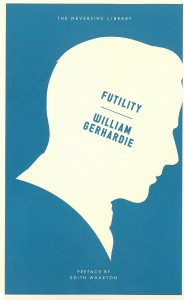
Gerhardie was born in old St. Petersburg, of English parents who left Russia at the time of the Revolution. He himself was brought up bilingual in English and Russian and was the first person in England actively to interpret Chekhov to his fellow writers. His own work was, in fact, deeply influenced by Chekhov, to whom, however, he added a very English type of comic absurdity. His books are like nothing else in the language, poetic, touching, silly, shameless and penitential. He is still alive at seventy-four, and there is time to repair an injustice before he dies.
Evelyn Waugh said of Gerhardie, I have talent, but he has genius. Melville House, Faber & Faber, and New Directions have recently been reissuing Gerhardie’s work.
Susan Sontag:
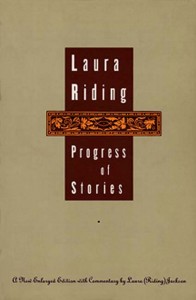
The first book that comes to my mind was published a little earlier than the period of your survey. It is a volume of short stories by the poet and critic Laura Riding called Progress of Stories (Random House, 1937). If I had a second choice, but this book is even older (it was published in London by Methuen in 1931), it would be that unclassifiable book of imaginary history by Olaf Stapledon called Last and First Men.
Riding’s Progress of Stories was reissued in 1982 with the original 18 stories, together with 13 additional tales and a new preface and commentary by the author. Since the last printing in 2002, however, this collection has gone out of print, though several of Rider’s stories are available alongside her better-known poetry in The Laura (Riding) Jackson Reader.
Of Last and First Men, science fiction master Arthur C. Clarke said, “No book before or since has ever had such an impact upon my imagination.” As it is now in the public domain, Stapledon’s future history novel is readily available both in print and on archive sites.
Wallace Stegner:
I wish I had a candidate for the “most neglected book.” Actually some of my own might qualify if we didn’t have to insert the word “unjustly” in there. But when I stretch my brains trying to think of a splendid book that has received no attention, I can’t come up with one. Why don’t you ask us sometime for a list of books that have had altogether too much attention for what they offer? Then we could all take out our hatchets and have fun.
Mark Strand:
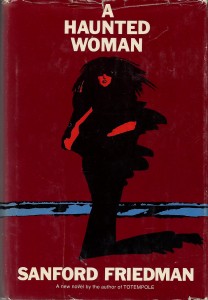
The one book it has been my privilege to read and hardly anyone else’s, a book that received no reviews that I can recall and that few people know about, is Sanford Friedman’s novel, A Haunted Woman (Dutton, 1968).
Kirkus did review A Haunted Woman, “a purgative self-portrait which, wincing all the way, examines the raddled, ravaged life of a former actress and a middle-aged ‘middle-class Medea.’ ” In 2014, NYRB Classics republished two of his books: Totempole (1965) and Conversations with Beethoven, which was left unpublished at his death. Might A Haunted Woman, currently out of print, be next?
Peter Taylor:

At a time when topicality and innovation seem to be everything to many readers, some reminder should be given that such a masterpiece as Caroline Gordon’s Aleck Maury, Sportsman (Scribner’s, 1934) still exists. Those who read it thirty years ago can hardly have forgotten the superb craftsmanship, the profound character drawing, the poetry the novel finally achieves in the meaningful relationship of all its elements.
We selected Aleck Maury, Sportsman as one of our own Ten Neglected Classics at the beginning of this year. It remains, like all but one of Gordon’s books, out of print.
Tom Wolfe:
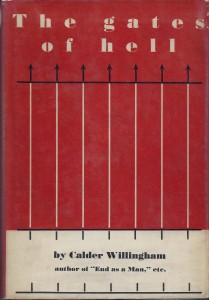
I would say Calder Willingham’s Gates of Hell. This book of fragments, published by Vanguard in 1951, did the whole Black Comedy number of the 1960s—only it did it first and funnier. Much in the manner that Dali’s paintings of the late fifties ran through most of the styles, from “Pop” to “Op” to “Concept,” that would succeed abstract expressionism a few years later. It doesn’t do to be too far ahead of your times, I guess. Ten minutes seems to be time enough.
Willingham wrote 11 novels, one of which he later adapted for the screen: Rambling Rose (1991), starring Laura Dern and Robert Duvall. He wrote the screenplay, along with Buck Henry, for The Graduate (1967) and twice collaborated with Stanley Kubrick. Despite the success of his 1963 novel Eternal Fire—praised in Newsweek as deserving a place among the dozen or so novels that must be mentioned if one is to speak of greatness in American fiction— Willingham is even more under-appreciated today than when this list first appeared.
Correction: The first part of this series alleged that all of Conrad Richter’s works were out of print. The Waters of Kronos is in fact still published by Penn State University Press. Additionally, four of William Goyen’s books are in print, not one as previously stated.

